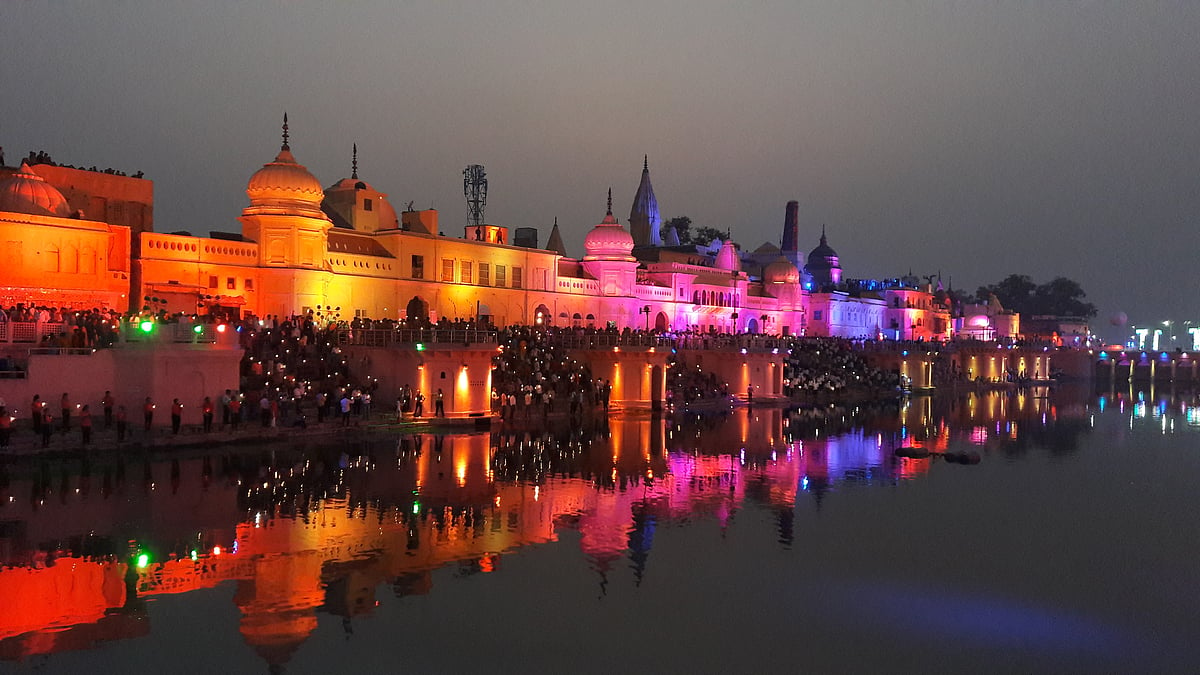For decades, the town of Ayodhya did not see much business activity, and without business, no city can truly develop. However, in the last three years, the government’s initiatives and its openness to inviting private sector investments have transformed Ayodhya. While the Ram Mandir may have been a major turning point, it’s the government’s welcoming approach to private investments that has made the real difference.
Building the Basics: Infrastructure Investments
A key factor in Ayodhya’s recent development has been the large investments in its infrastructure to improve connectivity especially roads, rail and airport. Well-known companies from various sectors have recognized the city’s potential and are channelling resources into improving roads, railways, hospitality and other essential services. These improvements are laying the groundwork for Ayodhya to grow as a hub for business and tourism.
Temple Tourism and Economic Growth
Ayodhya’s transformation, like other temple towns, is largely driven by its cultural significance, attracting millions of pilgrims annually. This increase in tourism boosts the local economy through spending on hotels, transport, food, and other goods and services. Tourists and other visitors contribute significantly to travel and lodging expenses, benefiting the local economy Temple tourism, growing at about 16% each year, creates jobs and generates billions, making it a key factor in Ayodhya's economic growth.
Government Programs Driving Growth
Several government programs have been launched to improve pilgrimage destinations like Ayodhya. Initiatives such as the Pilgrimage Rejuvenation and Spiritual, Heritage Augmentation Drive (PRASHAD) and the revamped Swadesh Darshan Scheme are helping to improve visitor experiences while also ensuring sustainable growth for these locations. Ayodhya’s inclusion in these programs shows the government’s commitment to balancing development with the preservation of heritage.
A Vision for the Future
The Government of Uttar Pradesh has laid out a clear vision for Ayodhya’s. The goal is for the city to not only honour its historical significance but also become a modern city and tourist destination by 2024. This vision is being supported by ₹20,000 crore investments in ongoing development projects, which include expanding the city’s rail infrastructure, preserving cultural sites, and improving connectivity.

Ayodhya Ram Mandir | wikimedia commons
Expanding Rail and Infrastructure
One major project was the development of a new railway terminal in Ayodhya, which opened in January 2024. Built near the Ram temple, this terminal is functional and handles a much larger number of passengers, making it easier for people to visit. The first phase was completed with an investment of ₹241 crore, and the second phase, costing ₹480 crore, has further integrated the station into the city’s infrastructure.
Balancing Heritage and Development
As Ayodhya develops and becomes modern, the city is also preserving its cultural heritage. A good example of this is the new Maryada Purushottam Shri Ram International Airport, which reflects Ayodhya’s historical and cultural importance while providing modern facilities for travellers. This balance of tradition and progress is key to Ayodhya’s development. Important land marks like the Lata Mangeshkar Chowk and other common areas have been built and require resources to maintain the same.
Road Infrastructure: A Key Focus
In addition to rail and air transport, roads are a major part of Ayodhya’s growth. The National Highways Authority of India (NHAI) is investing ₹12,000 crore in key projects like the Chaurasi Kosi Parikrama Marg and the Ayodhya bypass. These projects, along with other ongoing investments, are crucial for making Ayodhya a more connected and accessible city.
Private Sector’s Role in Growth
Ayodhya witnessed little to no development for 3 to 4 decades. The recent infrastructure development has played a huge role to ensure Ayodhya reaches its current state. The private sector has played a crucial role in the town’s progress, working alongside the government. Over the past four years, investments from both government and private entities have improved living standards of an average Ayodhya resident as it has created jobs, and boosted tourism. These developments have also had a direct wealth effect on the people of Ayodhya.
Strategically leveraging these trends, many companies have invested and expanded their businesses in Ayodhya. Among these are the Taj which is not just planning for 1 project but 3 projects (Vivanta, Ginger, IHCL Selections). Apart from this The Leela Palaces, Hotels & Resorts is coming up with a 100 key hotel Latest in this investment landscape is Tata Sons who have pledged to invest 650crs to build museum temples. Another player, The House of Abhinandan Lodha (HoABL) has committed large sums of money to develop a township with all the modern amenities to encourage investments in Ayodhya.
For any town to grow and become a global cultural capital, all stakeholders, including the local people should participate and support to make Ayodhya the city which we are all dreaming off. Agitations and lawlessness do not help and if there are people affected, they should address their grievances through the legal recourse available to every citizen rather than disturbing the people who are carrying out development work. Hostility towards investors can never be a win-win situation. It is the genuine investor who is risking his resources and hence they needs to be supported.
In conclusion, Ayodhya’s development is being driven by a combination of government initiatives and private investments. Infrastructure improvements are helping the city become more modern and accessible, while its cultural heritage is being preserved. This balanced approach is positioning Ayodhya as a city ready for the future, bringing both economic benefits and opportunities for growth.



.avif)








